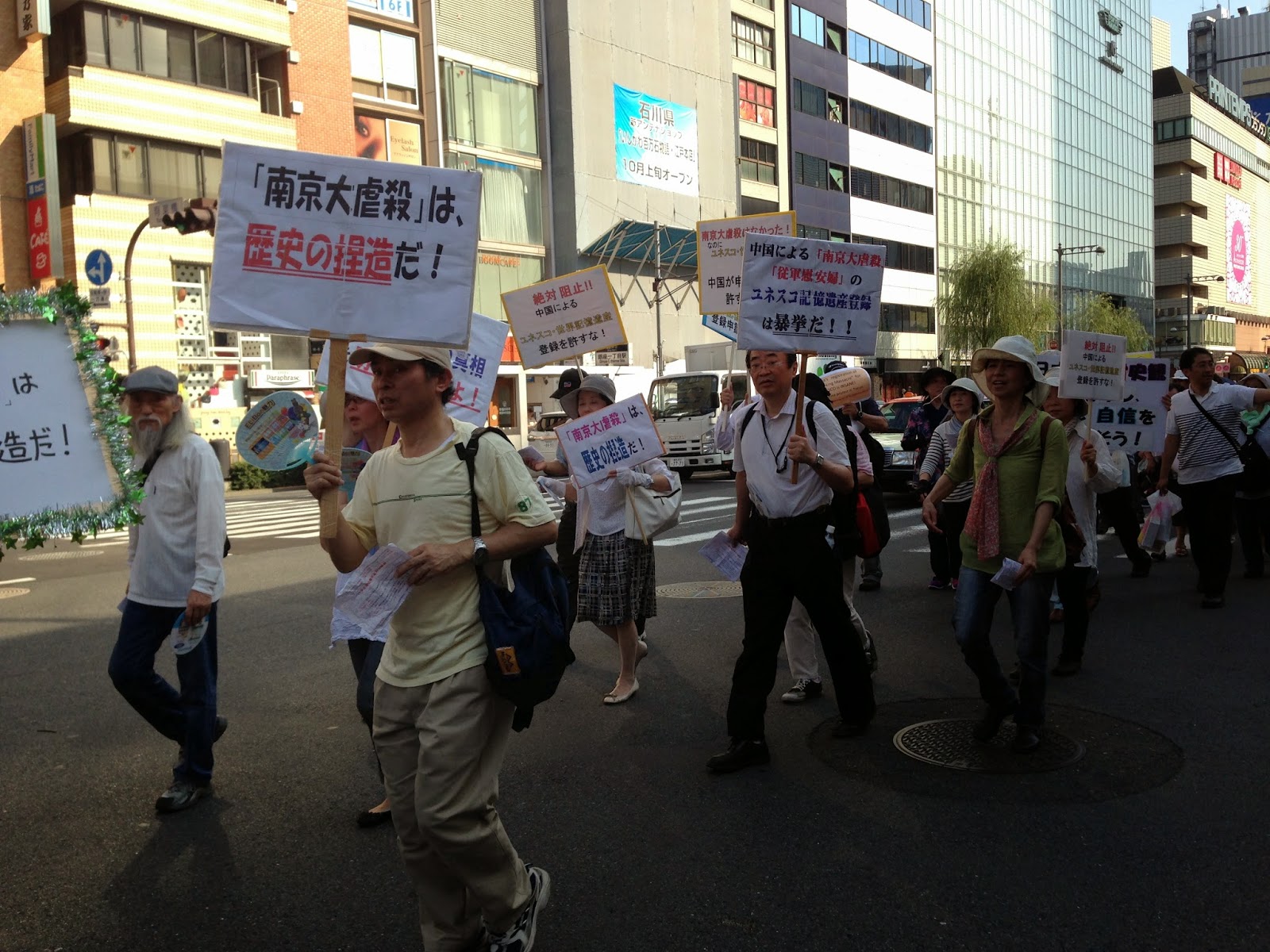Summer has arrived in Tokyo: plants, mist, wind chimes keeping the temperature down.
Thursday 31 July 2014
Wednesday 30 July 2014
Japan's rightward drift.
I was dismayed the other day out in Ginza to see right wing protests. As a friend pointed out, I shouldn't be shocked there have been right wing protests in Ginza since... I don't know how long really but for many decades. I'm not sure that I've seen a "Nanjing Massacre is a fabrication sign" before, though it's certainly on the agenda of the the Japanese right wing. What disturbed me was how normal these people looked: they look like my neighbours. Usually rightwing people are associated with black vans, blaring military music and have a thuggish image. (Perhaps the latter is just my prejudice.)
Japan's at a historical juncture: changes to the constitution have occurred by stealth with an executive "reinterpretation" of the Constitution that allows Japan to participate in other people's conflicts; the Special Secrets Act was passed at the end of last year which means that releasing government secrets is punishable by 15 years in gaol but there is no guide on what constitutes a secret; the PM has authorized the sales of weapons to foreign countries despite the previous understanding of Japan having a "pacifist" constitution which forbad it; the National Broadcaster, NHK, has a number of the board who are know rightists who support historical revision particularly in regard to "comfort women". Futhermore, prefectural assemblies are beginning to follow the central govts. wish to revise history and restore Japanese to being a country with a glorious history; Gunma prefecture is removing a statue that memorializes Korean wartime slave labour.
Young people in Japan, in the main, are not taught history as a topic that can be discussed and analyse. There is minimal knowledge of the occupation crimes. In my Japanese history class next semester, rather than starting in the past, I'm planning to start the course in the present with current controversies and go back from today. I want students to do their own investigations by going back to primary sources and reading the voices from the time. I was fortunate to pick up a bilingual autobiography of a Japanese soldier in Sabah (Sandakan). If the nationalists were to listen to voices from the foot soldiers of the past, they wouldn't be carrying on with such blind, mindless nationalism.
 |
| This was a protest in Ginza in June. More men, more thuggish, more hinomaru (rising sun) Japanese flag. |
* I've been to the new and the old Nanjing massacre museums in 1999 and 2008 respectively. As disdainful as I am of these protesters, I'm also critical of the Chinese govt. for intensely politicizing the matter when they built the new museum. It should not be a place for political point scoring.
Tuesday 8 July 2014
I can't be convinced...
..particularly in the light of changes in the interpretation of the constitution, that the newly launched recruitment campaign for the self defense force (Defence Ministry) which urges Japan's role in global peace making, looks peaceful in its intentions. I know nothing about planes but I can't help think kamikaze when I look at it.

- Posted using BlogPress from my iPhone

- Posted using BlogPress from my iPhone
Wednesday 2 July 2014
Changing a pacifist constitution
Subscribe to:
Posts (Atom)










